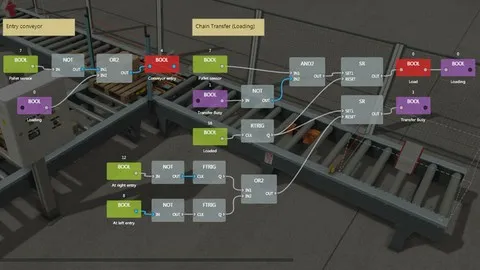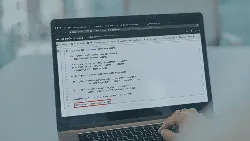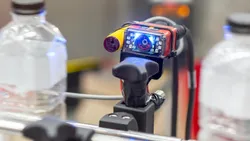
Free PLC Tutorial - Connect I&O- A SoftPLC 
This free PLC tutorial by Real Games provides an introduction to connecting I/O and simplifying complex logic. Learn the basics of PLC programming with this comprehensive course. ▼
ADVERTISEMENT
Course Feature
![]() Cost:
Cost:
Free
![]() Provider:
Provider:
Udemy
![]() Certificate:
Certificate:
No Information
![]() Language:
Language:
English
![]() Start Date:
Start Date:
Self Paced
Course Overview
❗The content presented here is sourced directly from Udemy platform. For comprehensive course details, including enrollment information, simply click on the 'Go to class' link on our website.
Updated in [April 29th, 2023]
This course provides an introduction to the basics of Programmable Logic Controllers (PLCs) and how to connect I/O (input/output) to a SoftPLC. It is designed to help students understand the fundamentals of PLCs and how to use them to control a variety of devices.
The course begins with an overview of PLCs and their components. It then covers the basics of programming, including ladder logic, Boolean logic, and other programming languages. It also covers the basics of connecting I/O to a SoftPLC, including wiring diagrams, signal types, and troubleshooting.
The course then moves on to more advanced topics, such as programming a SoftPLC to control a variety of devices, including motors, lights, and sensors. It also covers the basics of troubleshooting and debugging a SoftPLC.
At the end of the course, students will have a better understanding of PLCs and how to use them to control a variety of devices. They will also be able to troubleshoot and debug a SoftPLC.
This course is designed for students who are interested in learning the basics of PLCs and how to use them to control a variety of devices. It is suitable for students of all levels, from beginners to experienced professionals.
This course is designed to be interactive and engaging. It includes a variety of activities, such as quizzes, hands-on exercises, and simulations. It also includes a variety of resources, such as videos, tutorials, and reference materials.
At the end of the course, students will have a better understanding of PLCs and how to use them to control a variety of devices. They will also be able to troubleshoot and debug a SoftPLC.
This free PLC tutorial is designed to help students understand the fundamentals of PLCs and how to use them to control a variety of devices. It covers the basics of programming, connecting I/O to a SoftPLC, and troubleshooting and debugging a SoftPLC. It also includes a variety of activities, such as quizzes, hands-on exercises, and simulations. At the end of the course, students will have a better understanding of PLCs and how to use them to control a variety of devices.
[Applications]
This course provides a great introduction to the basics of Programmable Logic Controllers (PLCs). After completing this course, students should be able to apply the concepts learned to create their own PLC programs. They should also be able to connect I/O devices to the SoftPLC and understand the basics of programming logic. Suggestions for further application of this course include creating more complex logic programs, connecting more I/O devices, and exploring the different features of the SoftPLC. Additionally, students should be encouraged to explore the different types of PLCs available and the various programming languages used to program them.
[Career Paths]
1. Automation Engineer: Automation Engineers are responsible for designing, developing, and maintaining automated systems and processes. They use a variety of technologies, such as PLCs, robotics, and computer-aided design (CAD) software, to create and maintain automated systems. Automation Engineers are in high demand as the need for automation increases in many industries.
2. Control Systems Engineer: Control Systems Engineers are responsible for designing, developing, and maintaining control systems for industrial and commercial applications. They use a variety of technologies, such as PLCs, robotics, and computer-aided design (CAD) software, to create and maintain control systems. Control Systems Engineers are in high demand as the need for automation increases in many industries.
3. Robotics Engineer: Robotics Engineers are responsible for designing, developing, and maintaining robotic systems for industrial and commercial applications. They use a variety of technologies, such as PLCs, robotics, and computer-aided design (CAD) software, to create and maintain robotic systems. Robotics Engineers are in high demand as the need for automation increases in many industries.
4. Industrial Automation Technician: Industrial Automation Technicians are responsible for installing, maintaining, and troubleshooting automated systems and processes. They use a variety of technologies, such as PLCs, robotics, and computer-aided design (CAD) software, to create and maintain automated systems. Industrial Automation Technicians are in high demand as the need for automation increases in many industries.
[Education Paths]
1. Bachelor's Degree in Electrical Engineering: This degree program provides students with the knowledge and skills necessary to design, develop, and maintain electrical systems. Students learn about the fundamentals of electricity, circuit design, and digital logic. Additionally, they gain experience in programming and troubleshooting PLCs. With the increasing demand for automation and robotics, this degree path is becoming increasingly popular.
2. Master's Degree in Automation and Robotics: This degree program focuses on the development and implementation of automated systems. Students learn about the principles of automation, robotics, and control systems. They also gain experience in programming and troubleshooting PLCs. This degree path is becoming increasingly popular as automation and robotics become more prevalent in the workplace.
3. Certificate in PLC Programming: This certificate program provides students with the knowledge and skills necessary to program and troubleshoot PLCs. Students learn about the fundamentals of PLC programming, digital logic, and circuit design. Additionally, they gain experience in programming and troubleshooting PLCs. This certificate program is becoming increasingly popular as more companies are looking for employees with PLC programming skills.
4. Associate's Degree in Industrial Automation: This degree program provides students with the knowledge and skills necessary to design, develop, and maintain automated systems. Students learn about the fundamentals of automation, robotics, and control systems. Additionally, they gain experience in programming and troubleshooting PLCs. This degree path is becoming increasingly popular as automation and robotics become more prevalent in the workplace.
Pros & Cons

Easy to use software

Fastpaced course

Knowledgeable instructor

Simple and interesting

Only sound in one ear

Not compatible with Mac

Outdated version of Factory I/O
Course Provider

Provider Udemy's Stats at AZClass
Discussion and Reviews
0.0 (Based on 0 reviews)
Explore Similar Online Courses

Designing and Implementing Solutions Using Google Machine Learning APIs

The Korean Alphabet: An Introduction to Hangeul

Python for Informatics: Exploring Information

Social Network Analysis

Introduction to Systematic Review and Meta-Analysis

The Analytics Edge

DCO042 - Python For Informatics

Causal Diagrams: Draw Your Assumptions Before Your Conclusions

Whole genome sequencing of bacterial genomes - tools and applications

PLC Memory Organization

PLC: Industrial Sensors

Intro to PLC Programming - FREE
 Related Categories
Related Categories
 Popular Providers
Popular Providers
Quiz
 Submitted Sucessfully
Submitted Sucessfully
1. What is the purpose of the Free PLC Tutorial?
2. What is the main feature of the SoftPLC?
3. What is the main purpose of the Free PLC Tutorial - Connect I&O- A SoftPLC?
4. What is SoftPLC?
Correct Answer: It is a free PLC programming software.


Start your review of Free PLC Tutorial - Connect I&O- A SoftPLC